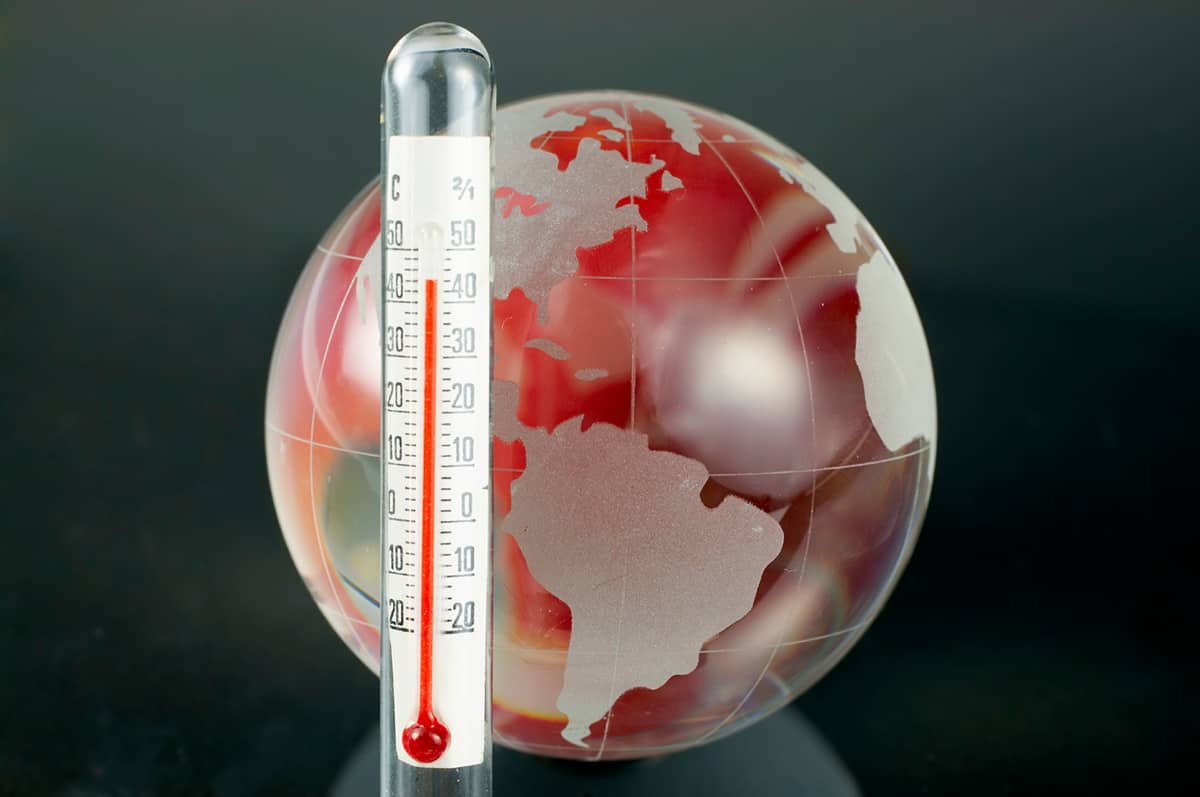Home>Weather and Climate>August 2021 Temperature Trends: Insights And Analysis


Weather and Climate
August 2021 Temperature Trends: Insights And Analysis
Modified: May 6, 2024
Discover the latest weather and climate trends with our in-depth analysis of August 2021 temperature patterns. Gain valuable insights for informed decision-making.
(Many of the links in this article redirect to a specific reviewed product. Your purchase of these products through affiliate links helps to generate commission for Temperatures.com, at no extra cost. Learn more)
Table of Contents
Introduction
Weather and climate play a pivotal role in shaping the world around us. From influencing daily activities to impacting global ecosystems, temperature trends hold a significant sway over our lives. Understanding these trends is crucial for making informed decisions and preparing for the future. In this article, we will delve into the intricate web of global and regional temperature variations, exploring their far-reaching effects on weather patterns and analyzing the temperature data for August 2021. By doing so, we aim to provide valuable insights into the dynamic nature of temperature trends and their implications for the world at large.
Temperature trends are not static; they are in a perpetual state of flux, influenced by a myriad of factors such as greenhouse gas emissions, ocean currents, and solar radiation. These trends are not only confined to a specific region but have a ripple effect that reverberates across the globe. By examining these trends, we can gain a deeper understanding of the interconnectedness of our planet's climate systems and the impact of human activities on these delicate balances.
As we embark on this journey of exploration, it is important to keep in mind that temperature trends are not isolated phenomena. They are intertwined with a complex tapestry of atmospheric dynamics, oceanic currents, and geological processes. By unraveling these intricacies, we can gain a clearer perspective on the ever-evolving nature of our planet's climate and the role that temperature trends play in shaping it.
Join us as we navigate through the labyrinth of global and regional temperature variations, uncovering the profound influence they wield over weather patterns and gaining valuable insights from the temperature data for August 2021. Let's embark on this enlightening expedition to unravel the mysteries of temperature trends and their profound impact on the world around us.
Global Temperature Trends
Global temperature trends serve as a barometer of the Earth's overall climate health, offering crucial insights into the long-term patterns and fluctuations that shape our planet's environmental landscape. Over the past century, the Earth's average surface temperature has exhibited a discernible upward trajectory, a phenomenon that has garnered widespread attention from the scientific community and the public at large. This upward trend, often referred to as global warming, has been attributed to a combination of natural climate variability and human activities, particularly the emission of greenhouse gases.
The instrumental temperature record, which dates back to the mid-19th century, provides a comprehensive chronicle of global temperature trends. This historical data reveals a consistent pattern of temperature escalation, punctuated by periodic fluctuations driven by natural phenomena such as volcanic eruptions and solar cycles. However, the overarching trend points to a sustained increase in global temperatures, indicative of the overarching influence of anthropogenic factors on the Earth's climate system.
The impact of global temperature trends extends far beyond mere statistical figures; it permeates the fabric of our natural environment, triggering a cascade of repercussions that reverberate across ecosystems and human societies. From the melting of polar ice caps and the acidification of oceans to the intensification of extreme weather events, the ramifications of rising global temperatures are multifaceted and profound.
Furthermore, the global temperature trends serve as a harbinger of potential future scenarios, offering valuable insights into the trajectory of climate change and its implications for the planet. By scrutinizing these trends, scientists and policymakers can glean critical information to inform mitigation strategies and adaptation measures aimed at addressing the challenges posed by a changing climate.
As we navigate the complex terrain of global temperature trends, it becomes evident that these patterns are not static; they are dynamic and responsive to a multitude of interacting variables. Understanding the intricacies of these trends is pivotal for fostering a holistic comprehension of the Earth's climate dynamics and charting a course toward a sustainable and resilient future.
Regional Temperature Variations
Regional temperature variations encapsulate the diverse tapestry of climatic conditions that unfold across different geographical locales, reflecting the intricate interplay of local topography, oceanic influences, and atmospheric dynamics. From the frigid expanse of polar regions to the sweltering heat of equatorial zones, each region exhibits its own unique temperature profile, shaped by a myriad of factors that contribute to its distinct climatic identity.
In the polar regions, such as the Arctic and Antarctic, temperature variations manifest in the form of extreme contrasts between the prolonged darkness of winter and the perpetual daylight of summer. These regions experience some of the most pronounced temperature fluctuations on the planet, with winter temperatures plummeting to bone-chilling levels and summer temperatures exhibiting a remarkable surge. The delicate balance of polar ecosystems is intricately linked to these temperature variations, influencing the behavior of ice sheets, the migration patterns of wildlife, and the dynamics of ocean currents.
Conversely, equatorial regions are characterized by consistently high temperatures throughout the year, with minimal seasonal variations. The tropical climate fosters a hot and humid environment, nurturing lush rainforests and diverse ecosystems. The temperature stability in these regions plays a pivotal role in shaping agricultural practices, biodiversity, and the livelihoods of local communities.
Moreover, coastal areas experience distinct temperature variations influenced by the moderating effects of adjacent bodies of water. The proximity to oceans or seas engenders milder temperature fluctuations, fostering more temperate climates compared to inland regions. This phenomenon is exemplified by the coastal regions of California, where the maritime influence contributes to relatively moderate and stable temperatures year-round.
In mountainous regions, temperature variations are intricately linked to altitude, with temperatures decreasing as elevation rises. This phenomenon gives rise to diverse microclimates within a relatively small geographical area, shaping the distribution of flora and fauna and influencing local weather patterns.
The intricate mosaic of regional temperature variations underscores the rich diversity of climates that adorn our planet, each with its own set of challenges and opportunities. Understanding these variations is crucial for devising region-specific strategies to mitigate the impacts of climate change, safeguarding ecosystems, and fostering resilience in the face of evolving environmental dynamics. By embracing the nuances of regional temperature variations, we can cultivate a deeper appreciation for the multifaceted nature of our planet's climate and work towards a harmonious coexistence with the natural world.
Impact of Temperature Trends on Weather Patterns
The impact of temperature trends on weather patterns is profound and far-reaching, exerting a pervasive influence on the dynamics of atmospheric phenomena. As global temperatures continue to rise, the intricate interplay between temperature trends and weather patterns becomes increasingly pronounced, giving rise to a spectrum of consequential effects.
One of the most notable impacts of temperature trends on weather patterns is the intensification of extreme weather events. Rising temperatures contribute to the escalation of heatwaves, hurricanes, and heavy precipitation, amplifying the frequency and severity of these events. This heightened volatility in weather patterns poses significant challenges to infrastructure, agriculture, and human settlements, underscoring the imperative of adapting to a changing climate.
Furthermore, temperature trends play a pivotal role in shaping precipitation patterns, influencing the distribution and frequency of rainfall across different regions. As temperatures rise, the capacity of the atmosphere to hold moisture increases, leading to alterations in precipitation dynamics. This phenomenon manifests in the form of prolonged droughts in some regions and intensified rainfall in others, disrupting ecosystems and agricultural systems.
The influence of temperature trends on weather patterns extends to the realm of atmospheric circulation, impacting phenomena such as the jet stream and monsoons. As global temperatures continue to rise, the equilibrium of atmospheric circulation patterns undergoes perturbations, giving rise to shifts in wind patterns and the onset of monsoonal seasons. These alterations in atmospheric circulation can have profound implications for regional climates, affecting agricultural productivity and water resources.
Moreover, temperature trends exert a discernible influence on the behavior of oceanic currents, which in turn influence weather patterns. The warming of ocean waters can lead to the disruption of established currents, triggering cascading effects on regional climates. This interplay between temperature trends and oceanic dynamics underscores the interconnected nature of Earth's climate systems, highlighting the intricate web of interactions that underpin weather patterns.
As we navigate the complex terrain of temperature trends and their impact on weather patterns, it becomes evident that these dynamics are not isolated phenomena; they are part of a larger tapestry of interconnected environmental processes. By unraveling the intricate relationships between temperature trends and weather patterns, we can gain a deeper understanding of the multifaceted nature of our planet's climate and work towards developing adaptive strategies to mitigate the challenges posed by a changing climate.
Analysis of August 2021 Temperature Data
In August 2021, the global temperature landscape exhibited a mosaic of regional variations, offering a nuanced portrayal of climatic dynamics across different parts of the world. The temperature data for August 2021 revealed a tapestry of contrasting patterns, reflecting the intricate interplay of local climatic influences and broader atmospheric dynamics.
Across the Northern Hemisphere, several regions experienced above-average temperatures, indicative of the lingering impact of summer heat. In North America, parts of the United States and Canada witnessed prolonged heatwaves, contributing to anomalously high temperatures. Similarly, Europe grappled with sweltering conditions, with heat domes exerting their influence over the continent. These temperature spikes underscored the persistence of summer's grip, fueling concerns about heat-related stress on ecosystems and human communities.
Conversely, parts of the Southern Hemisphere experienced below-average temperatures, signaling the onset of winter's chill. In the southern regions of South America and Oceania, cooler temperatures prevailed, aligning with the seasonal transition towards winter. These temperature anomalies underscored the hemispheric disparities in climatic conditions, reflecting the dynamic interplay of seasonal shifts across the globe.
Furthermore, the temperature data for August 2021 unveiled notable deviations in oceanic temperatures, with certain regions experiencing fluctuations that bore implications for marine ecosystems and weather patterns. The Pacific Ocean exhibited a patchwork of temperature anomalies, with the emergence of La Niña conditions in some areas exerting influences on global weather patterns. These oceanic temperature dynamics underscored the interconnected nature of terrestrial and maritime climates, highlighting the far-reaching impact of oceanic temperatures on atmospheric processes.
In addition, the temperature data for August 2021 provided insights into the persistence of long-term climate trends, with the overarching trajectory pointing towards sustained warming in many regions. These trends underscored the enduring influence of global climate change on local temperature dynamics, emphasizing the imperative of proactive measures to address the challenges posed by a changing climate.
As we scrutinize the temperature data for August 2021, it becomes evident that these patterns are not isolated occurrences; they are part of a larger narrative of global climatic dynamics. By unraveling the intricacies of these temperature variations, we can gain valuable insights into the evolving nature of our planet's climate and the imperative of fostering resilience in the face of dynamic environmental shifts.
Read more: Monthly Temperature Trends Analysis
Conclusion and Future Outlook
The intricate tapestry of global and regional temperature variations, coupled with their profound impact on weather patterns, underscores the dynamic nature of our planet's climate. As we navigate the complex terrain of temperature trends, it becomes evident that these patterns are not static; they are dynamic and responsive to a multitude of interacting variables. Understanding the intricacies of these trends is pivotal for fostering a holistic comprehension of the Earth's climate dynamics and charting a course toward a sustainable and resilient future.
Looking ahead, the future holds a myriad of challenges and opportunities in the realm of climate dynamics. The imperative of addressing the multifaceted impacts of rising global temperatures necessitates a concerted effort to mitigate the drivers of climate change and adapt to its far-reaching consequences. Embracing a proactive stance toward environmental stewardship and sustainability is paramount in shaping a future where the delicate balance of our planet's climate is preserved.
The future outlook also calls for a collaborative approach, transcending geographical boundaries and ideological differences to collectively address the challenges posed by a changing climate. By fostering international cooperation and knowledge sharing, we can harness the collective wisdom of diverse communities and scientific expertise to devise innovative solutions aimed at mitigating the impacts of climate change.
Furthermore, the future beckons us to embrace a paradigm shift in our relationship with the natural world, fostering a harmonious coexistence with the ecosystems that sustain life on Earth. By prioritizing conservation efforts, sustainable resource management, and the preservation of biodiversity, we can forge a path toward a future where the intricate web of life thrives in tandem with a stable and resilient climate.
In the realm of climate science, the future holds promise for advancements in monitoring technologies, modeling capabilities, and predictive analytics, empowering us to gain deeper insights into the complex dynamics of temperature trends and their cascading effects. These advancements will serve as invaluable tools in informing evidence-based policies and strategies aimed at safeguarding the integrity of our planet's climate systems.
As we stand at the threshold of the future, the imperative of fostering a collective commitment to environmental stewardship and climate resilience has never been more pressing. By embracing a forward-looking perspective and taking decisive action, we can pave the way for a future where the intricate dance of temperature trends unfolds in harmony with the natural rhythms of our planet, ensuring a legacy of sustainability for generations to come.














